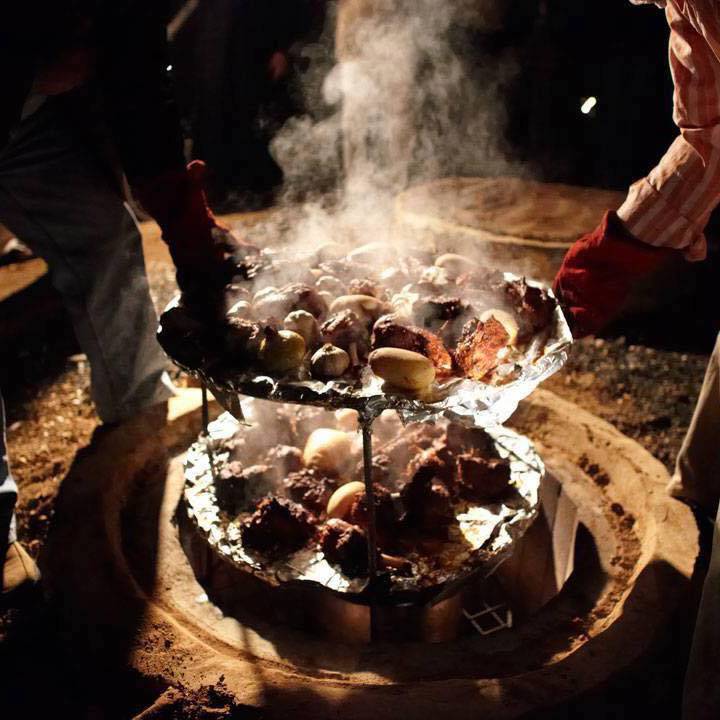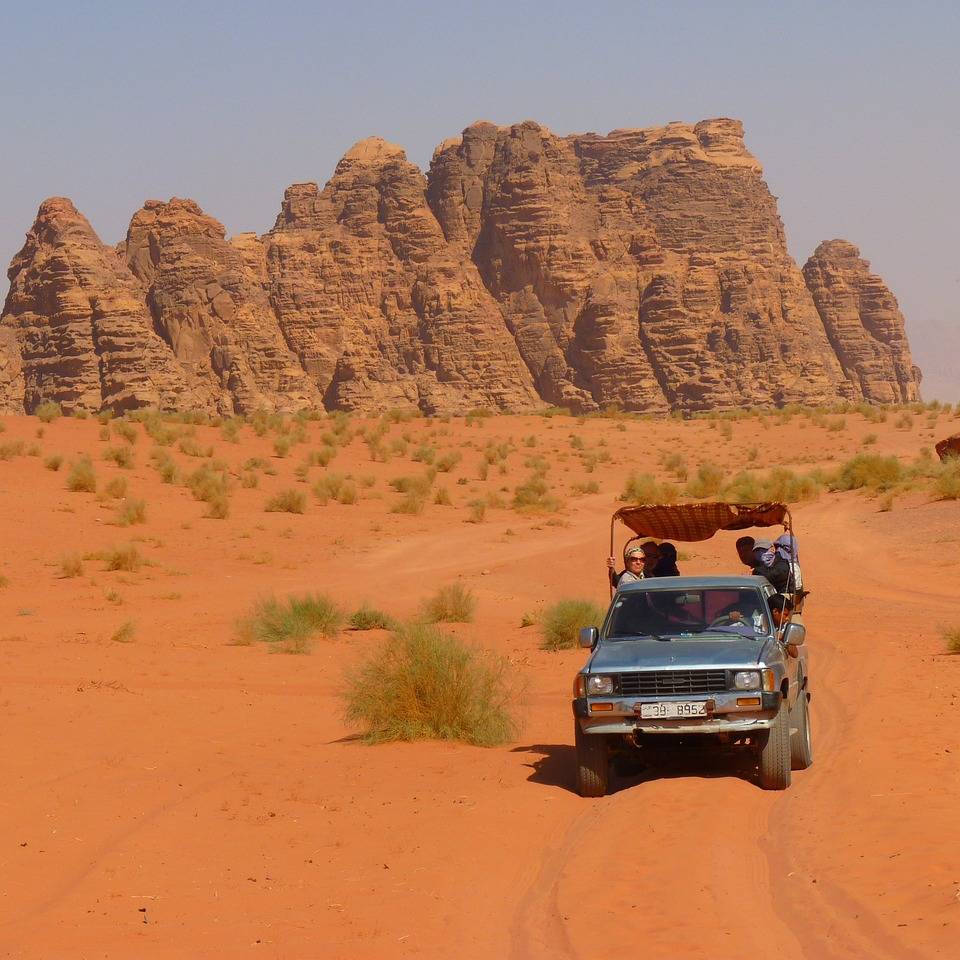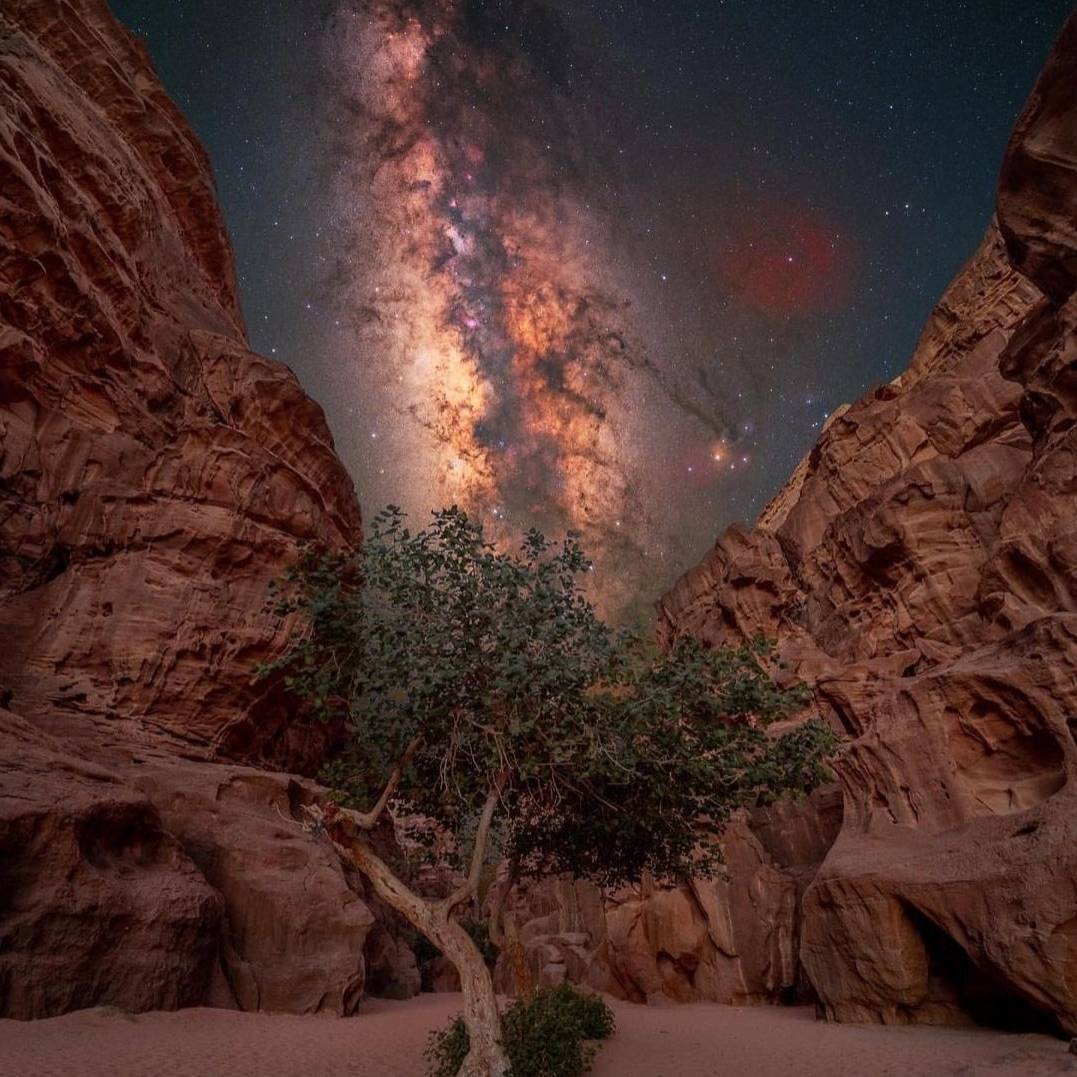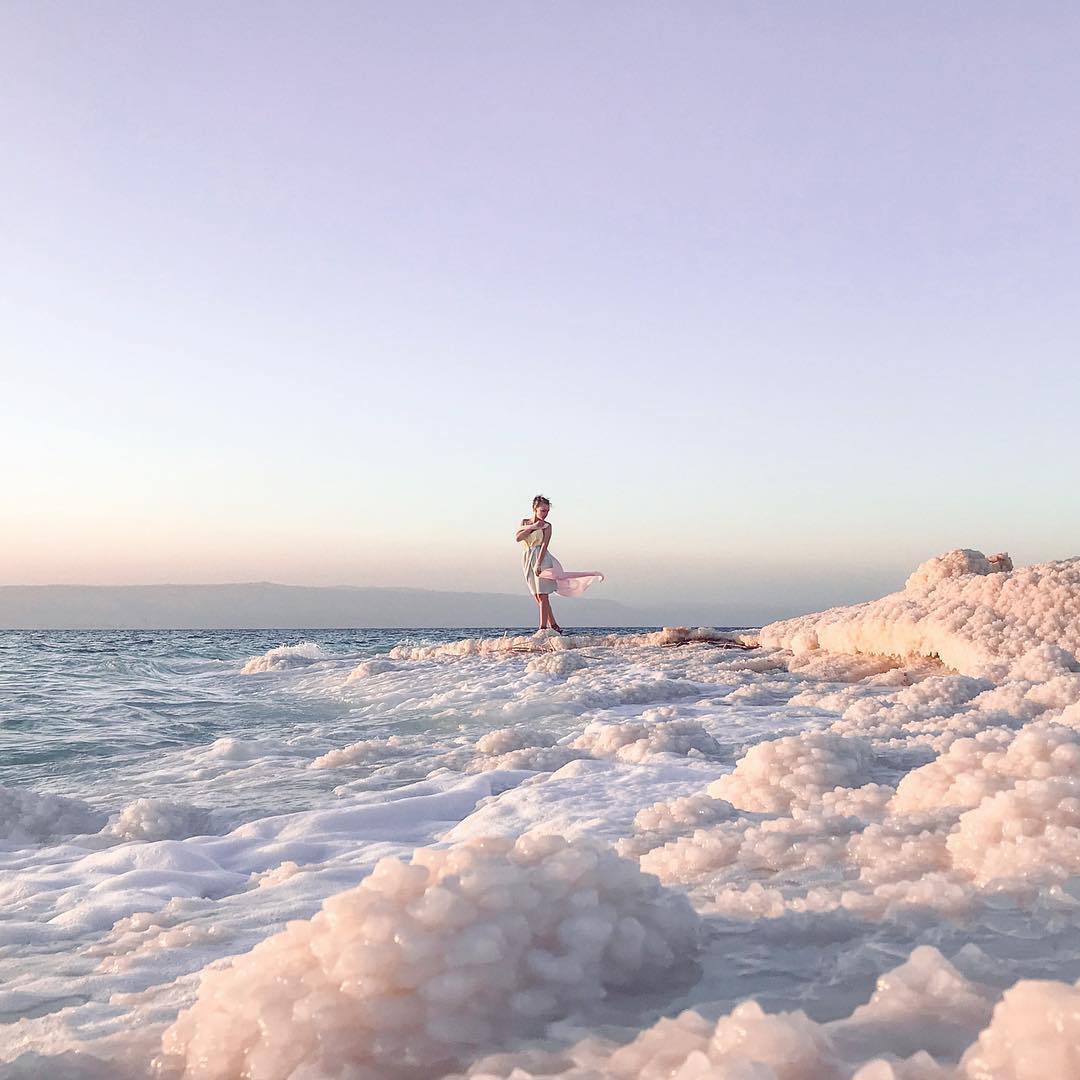
Home < Jordan < Zarb Zarb Zarb, also known as “Zarb Bedouin barbecue,” is a traditional cooking method used by the Bedouin people. It is a unique and ancient method of preparing a feast in the desert, where the food is cooked underground using hot coals and sand. To prepare Zarb, a large pit is dug in the ground and lined with hot charcoal. The charcoal is left to burn until it turns into a bed of glowing embers. Marinated meat, such as lamb, chicken, or goat, along with vegetables like potatoes, carrots, and onions, is placed in large metal trays or wrapped in foil. The trays are then lowered into the pit on top of the hot embers. The pit is then covered with a layer of sand, effectively sealing the heat inside and creating a makeshift oven. The meat and vegetables slowly cook in the sand oven for several hours, resulting in tender and succulent dishes infused with the smoky flavors of the charcoal. The Zarb cooking method is not only practical for the desert environment, but it also imparts a unique taste to the food, making it a cherished culinary tradition among the Bedouin communities. The slow-cooking process ensures that the meat is incredibly tender and infused with the aromatic spices and marinades used in the preparation. Zarb is often served during special occasions and gatherings, such as weddings, festivals, and family reunions. The communal aspect of Zarb brings people together, as they gather around the pit to enjoy a delicious and hearty feast cooked in the heart of the desert, surrounded by the vastness of the dunes and under the open desert sky. Home < Jordan < Zarb

Home < Jordan < Bedouin Experience Bedouin Experience Experiencing the Bedouin life when visiting Wadi Rum is a captivating journey into the heart of Jordan’s ancient desert traditions. As you step into this time-honored culture, you are welcomed with open arms by the hospitable Bedouin people, renowned for their warmth and genuine hospitality. The journey begins as you are invited into their traditional black tents, where simplicity and comfort blend seamlessly. Here, amidst the timeless sands and rugged beauty of Wadi Rum, you’ll have the unique opportunity to live as a Bedouin, embracing their customs, tales, and way of life. During your stay, immerse yourself in the art of desert living, learning age-old skills like brewing traditional Bedouin tea over a campfire, skillfully weaving colorful rugs, and navigating the vast desert terrain. Engage in heartfelt conversations with your Bedouin hosts, who eagerly share the stories and legends passed down through generations. The communal meals become an enchanting experience, as you feast on authentic dishes, prepared with love and seasoned with the flavors of the desert. The Bedouin experience in Wadi Rum is more than just an adventure; it is a cultural exchange that leaves a profound impact on your soul. You’ll find yourself embraced by the timeless spirit of the desert, as you witness the simplicity, resilience, and kinship that epitomize the Bedouin way of life. Home < Jordan < Bedouin Experience

Home < Jordan < 4X4 Adventure 4X4 Adventure Embark on an exhilarating 4×4 Adventure in Wadi Rum, where the untamed desert landscapes of Jordan come to life through an adrenaline-pumping journey like no other. Buckle up and prepare to explore the vastness of Wadi Rum’s rugged terrain in a sturdy 4×4 vehicle, specially designed to conquer the challenging desert dunes and rocky terrains. Your skilled and experienced driver, well-versed in the intricacies of the desert, will lead you on a thrilling ride, taking you deep into the heart of this awe-inspiring desert wilderness. As you venture into the sand dunes, you’ll experience the rush of adrenaline as the vehicle maneuvers through the undulating terrain, creating a sense of excitement and adventure. The ups and downs, twists and turns, provide an exhilarating experience that is bound to leave you with a smile on your face. Throughout the adventure, you’ll witness the ever-changing colors of the desert, from the warm ochre tones to the deep crimson hues that the sun casts upon the sandstone cliffs. The magnificent vistas, framed by the vast expanse of the desert sky, will leave you in awe of nature’s grandeur. Your 4×4 adventure in Wadi Rum will also lead you to iconic landmarks and ancient rock formations, such as the Seven Pillars of Wisdom, made famous by T.E. Lawrence (Lawrence of Arabia). Your guide will share fascinating stories about the history, culture, and Bedouin traditions, adding depth to your desert experience. For thrill-seekers and nature lovers alike, a 4×4 adventure in Wadi Rum offers a memorable escapade into a world of unbridled beauty and wild wonder. So, fasten your seatbelt and get ready to explore the enchanting desert landscape, where every moment promises excitement, discovery, and a sense of freedom amidst the vastness of Wadi Rum’s mesmerizing desert dunes. Home < Jordan < 4X4 Adventure

Home < Jordan < Hot Air Balloon Hot Air Balloon Embark on an unforgettable adventure with a Hot Air Balloon Experience in Wadi Rum, Jordan’s mesmerizing desert wilderness. Rising gently into the sky, you’ll witness the magnificent beauty of this otherworldly landscape from a whole new perspective. As you ascend, the vastness of Wadi Rum’s iconic red sand dunes, towering sandstone cliffs, and unique rock formations unfold beneath you. The ever-changing colors of the desert at sunrise or sunset create a captivating canvas, immersing you in a breathtaking panorama that seems straight out of a dream. The tranquility of the hot air balloon flight allows you to appreciate the serenity of the desert, undisturbed by the sounds of civilization. The stillness of the air enhances the sense of peacefulness and connection to the natural world, providing a unique moment to reflect and be in awe of the wonders of nature. Throughout the flight, skilled pilots guide the hot air balloon, ensuring a safe and smooth journey. They also offer insightful commentary, pointing out key landmarks and sharing fascinating facts about Wadi Rum’s geological history and Bedouin heritage. The experience is perfect for photographers and nature enthusiasts, allowing you to capture breathtaking aerial shots of Wadi Rum’s stunning scenery from a bird’s-eye view. The ethereal light at sunrise or sunset adds a magical touch to your photographs, creating lifelong memories to cherish. Whether you choose a sunrise flight to witness the desert come alive with warm hues or an evening flight to marvel at the fading daylight, a hot air balloon experience in Wadi Rum promises to be a once-in-a-lifetime adventure, taking your desert exploration to new heights—literally! Home < Jordan < Hot Air Balloon

Home < Jordan < Stargazing Stargazing Stargazing at Wadi Rum, also known as the Valley of the Moon, is a truly mesmerizing and unforgettable experience. Located in southern Jordan, Wadi Rum is a protected desert wilderness famous for its breathtaking landscapes, dramatic sandstone mountains, and wide-open skies, making it an ideal destination for stargazing enthusiasts and nature lovers alike. When the sun sets over the desert horizon, the night sky at Wadi Rum comes alive with a dazzling display of stars. With minimal light pollution in the area, the night sky is remarkably clear, providing an unobstructed view of the stars, planets, and celestial wonders above. During your stargazing adventure, you can witness the grandeur of the Milky Way stretching across the sky, and easily spot familiar constellations like Orion, the Big Dipper, and Cassiopeia. You might also catch a glimpse of shooting stars streaking through the darkness, adding to the magic of the experience. The peace and tranquility of the desert, coupled with the awe-inspiring beauty of the stars above, create a profound sense of wonder and connection to the universe. Stargazing at Wadi Rum offers a rare opportunity to escape the hustle and bustle of modern life, allowing you to marvel at the wonders of the cosmos and appreciate the beauty of our natural world. Whether you’re a seasoned stargazer or a first-time observer, the celestial display at Wadi Rum promises an enchanting and soul-stirring experience, making it a highlight of any journey to Jordan’s captivating desert landscapes. Home < Jordan < Stargazing

Home < Jordan < Mud and Minerals Mud & Minerals Indulge in the revitalizing world of Dead Sea Mud and Minerals, a luxurious skincare treasure renowned for its exceptional therapeutic properties. Sourced from the mineral-rich shores of the Dead Sea, this natural wonder is a potent blend of mineral-infused mud, carefully harvested to offer your skin a rejuvenating experience like no other. The Dead Sea Mud is known for its deep-cleansing abilities, drawing out impurities and toxins while gently exfoliating, leaving your skin feeling soft, supple, and radiant. Enriched with a unique combination of minerals, including magnesium, calcium, and potassium, this exquisite blend nourishes and replenishes your skin, promoting a youthful and vibrant complexion. Whether you seek to combat blemishes, reduce the appearance of fine lines, or simply pamper your skin with a spa-like experience, Dead Sea Mud and Minerals are your gateway to achieving a glowing and revitalized appearance. Home < Jordan < Mud and Minerals

Home < Jordan < Floating Floating Floating in the Dead Sea is a unique and unforgettable experience that draws visitors from around the world. The Dead Sea is a saltwater lake situated at the lowest point on Earth, shared by Jordan to the east and Israel and Palestine to the west. It is renowned for its incredibly high salt concentration, approximately 10 times saltier than regular seawater. Due to the high salt content, the water in the Dead Sea is exceptionally buoyant, making it virtually impossible for swimmers to sink. When you enter the water and lie back, you’ll effortlessly float on the surface, feeling weightless as if you’re floating in air. This phenomenon is an exciting and fun experience for visitors, often resulting in laughter and amazement. Beyond the novelty of floating, the Dead Sea’s waters are also famous for their therapeutic properties. The mineral-rich mud found along the shores is believed to have healing effects on the skin and has been used for centuries in various beauty and health treatments. Many visitors enjoy smearing the mineral-rich mud on their skin before taking a dip in the sea, creating a unique spa-like experience. However, it’s essential to note that, despite its allure, the Dead Sea’s extreme saltiness means that you must avoid getting the water in your eyes, nose, or mouth, as it can cause discomfort. Additionally, it’s vital to stay hydrated and limit your time in the water, as prolonged exposure can be dehydrating for some individuals. Floating in the Dead Sea is not only a fun and memorable activity but also an opportunity to connect with nature and experience one of the world’s most extraordinary natural wonders. It’s an iconic bucket-list experience that offers a true sense of wonder and awe, leaving visitors with lasting memories of this remarkable place. Home < Jordan < Floating

Home < Jordan < Wadi Mujib Wadi Mujib .Wadi Mujib, often referred to as the “Grand Canyon of Jordan,” is a remarkable natural wonder that showcases the breathtaking beauty of the Jordanian landscape. Located on the eastern shore of the Dead Sea, this majestic river canyon is an integral part of the Mujib Biosphere Reserve, encompassing a vast area of rugged terrain and pristine wilderness. The Wadi Mujib Biosphere Reserve is a vital conservation area in Jordan, aimed at protecting the region’s unique biodiversity and preserving its delicate ecosystems. The reserve is home to a wide range of plant species, including rare and endemic ones, providing a sanctuary for various flora and fauna to thrive in this arid environment. One of the main highlights of Wadi Mujib is the exhilarating Siq Trail, which offers an unforgettable adventure for visitors of all ages. The trail meanders through narrow gorges carved by the Mujib River, leading hikers into the heart of the canyon. To traverse the Siq Trail, trekkers often wade through the refreshing waters of the river, a thrilling experience that adds to the allure of the journey. As the Siq Trail progresses, participants encounter a series of cascading waterfalls and captivating natural pools, making the trek an immersive and rewarding experience. The sight of the Mujib Waterfall, with its majestic rush of water, is a true testament to the power and beauty of nature. The rugged beauty of Wadi Mujib, with its towering cliffs and awe-inspiring rock formations, paints a mesmerizing portrait of Jordan’s diverse landscapes. The contrast between the arid desert surroundings and the vibrant blue waters of the river creates a scene of breathtaking serenity. The journey through Wadi Mujib offers more than just adventure; it provides a unique opportunity to connect with nature and witness the delicate balance of life in an arid environment. The remarkable variety of wildlife, including various bird species and mammals, highlights the ecological importance of the region and emphasizes the need for conservation efforts. Wadi Mujib stands as a testament to Jordan’s commitment to preserving its natural heritage while offering visitors a chance to appreciate the country’s stunning landscapes. It is a place of wonder, adventure, and serenity—a destination that captures the essence of Jordan’s captivating charm and draws travelers from all corners of the world. For those seeking an immersive experience in nature’s embrace, Wadi Mujib beckons, promising a journey that will leave lasting memories of its beauty and grandeur. Home < Jordan < Wadi Mujib

Home < Jordan < The Baptism Site The Baptism Site The Baptism Site, also known as Bethany Beyond the Jordan, is a significant religious and historical location situated on the eastern bank of the Jordan River. It is traditionally believed to be where Jesus Christ was baptized by John the Baptist. The site holds immense importance for Christians worldwide and is a popular destination for pilgrims from different Christian denominations. Archaeological excavations have revealed ancient churches, baptismal pools, and other structures, adding to its historical value. The site is also of significance in Jewish history as the location where the Israelites crossed the Jordan River to enter the Promised Land. It is easily accessible from Amman and other major cities in the region and fosters ecumenical efforts through collaboration between Jordanian authorities and various Christian denominations. Visitors can explore the archaeological remains, participate in religious ceremonies, and appreciate the spiritual ambiance of this revered place. Home < Jordan < The Baptism Site










